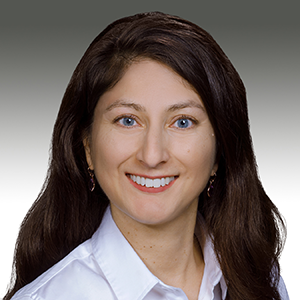
Mona Jain Relationship Manager & Participant Education Specialist
In my role as a 401(k) Relationship Manager, people often ask me about how to understand their mutual fund options. When it comes to investing, I encourage retirement plan participants to consider all the funds like options at a lavish Las Vegas buffet. You know the buffets I'm talking about, with a robust carving station overflowing with succulent meats, verdant fields of organic greens and an acre of perfectly decorated jewel-toned desserts. Once you pay your all-you-can-eat entry fee, you can try all of the options or gorge on just a few tasty dishes.
The trick with the Las Vegas buffet and your 401(k) retirement plan is balance. Overindulgence at the buffet with foods loaded with sugar, fat and salt can lead to an irate stomach and a trip to the pharmacy at midnight. When it comes to investing for your retirement, an approach to avoid financial tummy pains is asset diversification. In other words, asset diversification is how you divide your money between stocks, bonds and cash options in your 401(k) mutual fund selections.
What are My Options?
Three choices? That's easy! Not really. It's not as simple as just picking between stocks, bonds and cash. There are several kinds of stock and bond funds when investing. What's the difference?
Let's start with stocks. Each stock is part ownership of a company, and there are thousands and thousands of companies out there. A common way to understand all the stock options is to divide the companies into categories by market capitalization or multiply the number of a company's stocks by the stock price per share. The most recognizable companies for many of us would be those large-cap companies (large capitalization). These companies are mega-big, such as Microsoft, Apple, and Amazon, and generally have a market capitalization at over $10 billion. Just below the large-cap companies, are the mid-cap (middle capitalization) companies. These companies, such as Chipotle and AutoNation, typically have a market capitalization between $2 billion to $10 billion. The smallest companies in most of our retirement plan mutual funds are the small-cap (small capitalization) companies. These companies have a market capitalization of around $300 million to $2 billion. Examples of small-cap companies are Barnes and Noble and The Children's Place.
Typically, the large-cap mutual funds tend to be the least risky, mid-cap mutual funds are riskier and small-cap mutual funds are considered the riskiest. When it comes to investing, there is often a relationship between risk and reward. The more risk (or possibility of loss), the more possible return (or money you can earn). The largest companies are usually more stable and less likely to increase or decrease in value dramatically. The smaller companies can be more volatile or go substantially up and down in value. Balancing between these various stock mutual funds can be an important goal in retirement planning. In some years, large-cap companies will handsomely reward their stockholders with increasing stock price values. In other years mid-cap companies are posting the highest returns. For example, factors that may cause certain companies to make more money (such as the price of oil increasing or reducing tariffs) could negatively impact other companies. By owning different types of funds, that are themselves often diversified with hundreds of companies' stocks, you may benefit from whichever part of the stock market is increasing its profits and mitigate your losses from those parts that aren't doing as well.
As there is a variety of stock fund options, there are also several types of bond and cash funds. For stable and highly liquid investments, those that can easily be bought and sold, there are cash options such as money market funds. These funds tend to focus on preserving the initial investment with modest growth or yield. As background, a money market fund tends to invest only in cash, cash equivalent securities and debt-based securities with a term less than 13 months and high credit ratings.
Next, there are bond funds that are a collection of loans by an investor to a borrower, such as a corporation or government. Some bond funds invest primarily in investment-grade bonds, such as bonds issued by the U.S. government, government agencies, corporations and municipalities. Investment-grade bond funds tend to offer higher yields than money market funds with increased volatility. Finally, there are bond funds that invest in high yield, lower quality bonds that offer potentially even higher returns with more significant risk than the investment-grade bond funds. Add to this mix international bond funds, and there is a lot to choose from in building your retirement portfolio!
I Understand My Options, Now What?
Once you have an understanding of your various investment fund options and asset diversification, then you can consider where to put your money. An important component to retirement investment planning is asset allocation or the amount of money you put in each of these investment choices. Asset allocation depends on your time horizon (or how soon you need the money) and risk tolerance (willingness to lose some or all of your original investment in exchange for potentially greater returns). For those who need their money sooner because they are closer to retirement can consider more conservative investments. As a result, these investors may have a substantially more significant percentage of bond funds in their retirement account. Younger folks could have a larger percentage of their retirement account in more aggressive stock funds and less in bond funds since they have more time to make up for major losses.
Asset allocation, risk tolerance and time horizon are critical components when it comes to your retirement planning, and there's a lot more ground to cover. In future blog posts, we'll be going further down this investment highway and stopping at exciting financial lookouts along the way. Plus, I'll also review periodic account rebalancing. Buckle your seatbelts; we're heading out on a grand tour of retirement plan investments 101 in the coming months!
If you can't wait or have questions in the meantime on achieving your retirement financial goals, ACG is here to help.




